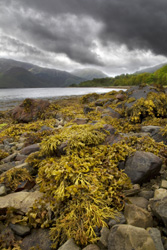Immigration control for invasive seaweed
Sargassum muticum originated in Japan, but has spread to many parts of the world, including European waters. Its pervasive nature can lead to negative effects on the local ecosystem, such as reducing light levels in sub-surface waters and obstructing boat traffic. The ALIENS project, funded by the Energy, Environment and Sustainable Development Programme, sought to develop new approaches to managing invasive species. Scientists with the Universidade do Algarve in Portugal led an effort to apply a demographic matrix model to study the population dynamics of Sargassum muticum. The key finding from the simulation exercise was that the seaweed's strength lies in the longevity of its adult population rather than prolific rates of reproduction. However, when the proper conditions prevail, reproduction can play an important role. One limitation of the model is that it does not account for immigration or emigration of individuals. Sufficient data on dispersion must be acquired before this aspect can be properly evaluated. The ALIENS demographic matrix modelling results will be exploited to develop appropriate control measures to manage Sargassum muticum populations.



